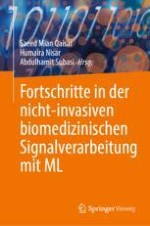2024 | OriginalPaper | Chapter
8. Biomedizinische Signalverarbeitung und künstliche Intelligenz in EOG-Signalen
Authors : Alberto López, Francisco Ferrero
Published in: Fortschritte in der nicht-invasiven biomedizinischen Signalverarbeitung mit ML
Publisher: Springer International Publishing
Activate our intelligent search to find suitable subject content or patents.
Select sections of text to find matching patents with Artificial Intelligence. powered by
Select sections of text to find additional relevant content using AI-assisted search. powered by
